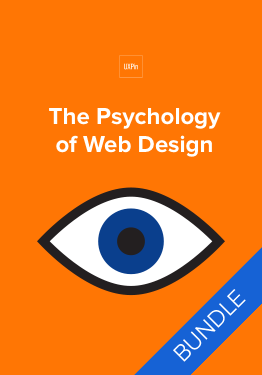The Hard Truth About UX Strategy

So you’re a designer.
You’ve been one for a while now. Maybe you’re young, maybe you’re established. You’ve been doing it long enough to know it’s not always as satisfying as it should be.
The root of the issue lies in the decisions that exclude you. They prioritize features and fixes that don’t matter. They’re reactionary, based on some data someone learned about. They make you feel like you’re stagnating.
A lot of times, this is true. Most of the time, you just don’t know enough about why those decisions are being made.

This is why you say you want to “do more UX strategy work.” You think it’s about making decisions. You think you can make better ones than the people making them now. And maybe that’s true.
Before you’ll ever find out, you need to accept the hard truth. UX strategy doesn’t work like that.
What good UX strategy actually entails is researching and recognizing the constraints and concerns from all sides and painting a big red target on the wall so that everyone involved can make decisions that serve researched, vetted, and defined objectives.
This is the truth about UX.
What UX Strategy Really Looks Like
In its most tangible form, UX design is first captured in a strategy document. Ideally, it’s one that’s been preached about to everyone involved in a project (no matter the scope) and referred to every time a decision gets made.
In concept — and the concept is what drives the tangible document — it’s a collection of several types of guidelines, each type tied to a different aspect of the same objective, together serving a unified purpose.
Every piece of the strategy has been researched. Every piece has been vetted. Every piece has been discussed and agreed upon by the relevant stakeholders.

Photo Credit: Barrel via Minnow Park
On projects with a narrow scope — like a single feature or a minor usability improvement — you can devise and document the strategy in an afternoon.
On bigger projects — the kind critical to a company or aimed at shaping a product for the long-term — it can take weeks.
In every situation, the UX process is evolutionary. A strategy is never written in stone. Companies change focus. New information pops up. Competitors appear on the scene and drive new customer requirements. Strategy must evolve accordingly.
When politicians change their minds, we call it flip-flopping. When we change our minds about strategy, we call it good design.
Without constraints, without understanding, without research, without vision and success metrics and guiding design principles, design is not design. It’s decoration. With these things, however, we practice design at its very best. We design with purpose, intent, and measurable outcomes.
The Intent UX Strategy Represents
Designers far and wide like to jump in. Get things done. Put pixels on the screen and make them do tricks.
Strategy doesn’t work like that, either.
The point of strategy isn’t to prescribe anything. It’s not a document of decisions. It’s a document that drives decisions.
The strategy document focuses on goals over actions, ideas over to-do lists. It’s purpose is to show the idea, the concept, of the thing you’re designing. It’s to give everyone involved a unified sense of what the thing is and why it will exist. It’s to enable other people to make decisions that help it achieve that.

If your strategy document is prescriptive — describing specific features or assigning detail to what should still be a notion of a product — it’s no longer strategic. It’s either a badly-written spec document or an ego-driven attempt by the designer to dictate details at a time when the focus should be on objectives.
Goals over actions. Ideas over to-do lists. This is the correct form of UX strategy.
Grab design ebooks created by best designers
All for free
 Download
Download
 Download
Download
 Download
Download
 Download
Download Do you want to know more about UI Design?
Do you want to know more about UI Design?Download 'The Essential Elements of Successful UX Design' FOR FREE!
Download e-book for freeCloseThe Form UX Strategy Takes
A UX strategy document always includes a few key elements. I go into these in greater detail in the free Field Guide to UX Strategy. For now, we’ll focus on the vital concepts.
First, the form it takes.
A strategy is meaningless unless it’s internalized by everyone involved in the project and used to make good decisions. To this end, just like the design work from which it’s based, the strategy document itself must be approachable and usable. After doing some user interviews and talking with stakeholders, I start crafting the strategy document based on the following points:
Vision– What problem will the product solve, and what is the initial idea of what it might be?
Circumstances of Use- Who is using the product? What information do they seek? When will they use it? Where will they use it? Why are they using it?
Design Criteria – This is my favorite part because it demands specificity. “Fast, easy, and intuitive” doesn’t fly. You need to focus on how you’ll achieve those principles, e.g. “Let users slice available statistics in any way that might be helpful, so that analysis can be done in a timely manner.”
Success Metrics – Focus on a small set of core metrics. Be as specific as possible. Don’t write down, “Get more traffic.” Ask how much traffic. Ask what you want that traffic to do while it’s hanging around on your website. Ask what percentage of people you want to sign up for your app three months from now as compared to today.
I have a strict rule for my own projects that a strategy document will never require more than two sides of a single sheet of paper when printed as straight, long-form text. It needs to be short enough that people will actually read it.
That said, the strategy will, in fact, be printed. And for that reason, I almost never actually use a single sheet of paper. A Word doc will work in a pinch, sure, especially when you’re just emailing it around to people, but ideally, you’ll be able to tack pieces of this thing up all around the office where the project team works.


Better to use a slide deck.
Pop open Keynote or Powerpoint or Google Slides and distribute the points across a series of slides where they can be digested one at a time.
Use the slide deck to review the strategy with the team. Showing them one piece of information at a time prevents them from reading ahead and asking premature questions.
After that, print each slide.
Then find the thumbtacks.
Posters keep the points present. Literally. Team members see them as they arrive each morning, they can point at them during conversations, and they can look them over while considering options during a decision. They create constraints, and constraints are where design decisions are born.
Concise. Printed. Present.
The Logic Spawned by Strategy
Finally, the UX strategy, once documented, becomes the source of causality for design decisions.
There are no magical leaps in the curation of feature lists or the design of task flows. These things are born from logic. This, therefore that. The strategy drives conversations wherein one thing follows another.

Photo credit: Marek Bowers via Ryan Singer
I spoke to UX expert Christina Wodtke recently, and she explained where designers screw up with strategy.
“They miss the therefore,” she said. “A designer would say they spoke with a bunch of people who really liked ice cream, which lead to building some cookies.”
As she elaborated, you need to unthread the logic and ensure each piece connects.
“You need a therefore in there. The design strategy only makes sense if people like ice cream because they like sweets, but ice cream’s too cold and it’s not really good in the winter, so we’re thinking cookies because ….”
Strategy gives you therefore. It gives you the first part of the equation A + B = C.
And since you evangelize the strategy doc, even if you forget about it once in a while, others will be equally armed with the strategy’s bullet points to remind you that A + B = C.
It’s never enough — to say “I want this thing to exist.” This thing cannot do what you want it to do until this thing has a strategy behind it. A clear concept of what this thing is. A clear set of guidelines for what makes this thing different than its competitors. A set of metrics to measure out whether or not this thing is working well.
Great designers are not creative geniuses who spend weeks behind closed doors and return with a grand reveal. Great designers speak with users and stakeholders to tease out the right problem, document their initial strategies, then start building and testing their solutions.
Vetted ideas, based on research, must guide design logic. When you’ve followed a validated process that helps reveal the therefore, you can better coach the rest of the company to make decisions that follow your logic.
When you’ve done that, you’ve become the strategic designer. The designer who drives business results. The designer who really matters.
For more advice on planning and executing UX strategies, check out the free Field Guide to UX Strategy. The tactics are based on my 15+ years of UX work with companies like Intuit, Rackspace, Adobe, Dodge, and others.
The post The Hard Truth About UX Strategy appeared first on Studio by UXPin.
UXpin's Blog
- UXpin's profile
- 68 followers




